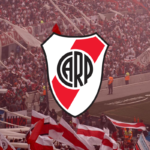


Recycling. It’s a pretty big deal these days, and every ciudad/estado/provincia/país (city/state/province/country) has a different way of going about it. Some, obviously, are more effective than others, but most places seem to at least be making an effort, which is always a good start. In Buenos Aires, however, the recycling system is unlike that of most other major cities in the world. Why? Let’s talk about cartoneros…
Cartoneros are the name for the recycling system here in Buenos Aires, or rather the recycling people. Surely you have heard about the major economic crash that happened in Argentina in 2001 (if not, it was massive, and pretty much the entire population lost thousands upon thousands of pesos. Definitely worth a little Internet research, especially if you have any plans to come down for a visit.) Because of the crash, the population of the país, and especially of el capital, were left scrounging for money in any way that they could. For some, the most lucrative scavenging market happened to be in recyclable goods, so people began living their lives collecting all the recyclable goods from the streets, and from there the cartoneros began.
Cartoneros typically live in specific neighborhoods called villas (shantytowns), located within and on the outskirts of Buenos Aires (the ciudad, not the provincia). They typically start their days at about 6pm or later, whenever most city-dwellers have put out their trash in the evening along the streets. The cartoneros rummage through the various garbage bags and dumpsters pulling out any items that can be recycled. They put all these items into a large cart, which they all carry with them, and by the end of the night, often around 11pm to 1am, they head back home.
Transportation is obviously not easy for them, as most public transportation does not run during this time, and even if it did, it could not accommodate the large carts that the cartoneros carry with them. At the end of the night, the cartoneros bring all of their finds to recycling factories in exchange for cash, but these factories are often located one or two hours outside of the city. For this reason, there are ‘unofficial’ trains provided by the government that run throughout the night, bringing the cartoneros to and from the city and factories. The most popular of these trains is called el Tren Blanco (the White Train). These trains are not a nice ride, though– they have no seating, no lighting, and as you can imagine, not the nicest of aromas. Some of the trains have police protection, but for the most part there is no protection at all, which makes for a long, dangerous, unpleasant ride made by hundreds of families every single day.
Nonetheless, the government of Buenos Aires has always supported the cartoneros and their hard work, because it not only serves as a recycling program for the city, but it also is the way that hundreds of families are supported throughout the ciudad– it provides an income that might not be found anywhere else. However, with a new mayor in office (well, new-ish–since 2007) who happens to be from one of the richest families in Argentina, there is now talk of shutting down el Tren Blanco, which would leave the cartoneros without transportation to and from the city. As you can imagine, this has caused a bit of controversy. What do you think?
(US) 910 795 2992
(AR) +54 9 11 —- —-
©Copyright 2025 Landingpadba, LLC